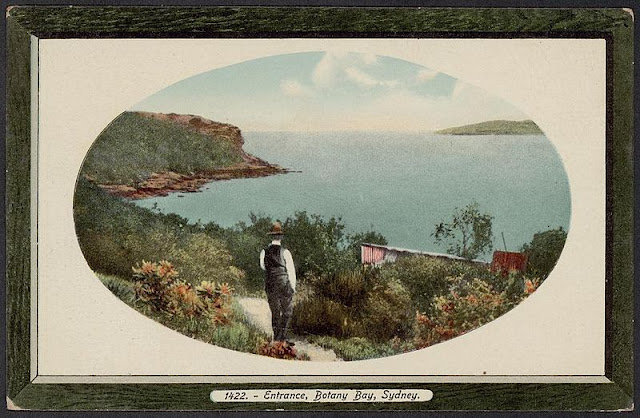StateLibQld 2 179687 Military parade of the 1st Contingent, marching in Queen Street, Brisbane, 1914.jpg
CASUALTY LISTS WORLD WAR I
The image above portrays crowds in Queen Street, Brisbane, gathering to farewell and cheer on soldiers heading to war. Though we can't see their faces, we can imagine the mixed feelings that encompassed the crowd.
Mothers, fathers, siblings, wives, children.. engulfed with pride and sadness, happiness and fear... but no doubt, along with so many other emotions, the one thing they would be trying to push to the back of their mind... would this be the last time they would see their loved ones?
Then, not least of all, the emotions of those young, and not so young men, heading off to the unknown. Many looked on it as an adventure.. going overseas, for most, the only chance they would get. They dreamed of far off lands, not really allowing themselves to think of the reality of war. My maternal grandfather was just 17, full of bravado and excitement and wanting above all, to get to Paris... *see end of post
The results of war, this and so many other conflicts, can be read in numerous places. Reality hit home well and truly when the Casualty Lists were published...I can't imagine the fear of finding a loved one's name in these, hoping if it did appear, that it would 'only' be in the injured list, preferably with a comment 'returned home'.
The following is just a small selection of these lists, courtesy of TROVE. There are casualty lists for various states as well as Australia in general.
Please click to enlarge... N.B. the names aren't in any particular order, so you need to search through. You can always use the URL listed above the page to find the actual article.
Telegraph (Brisbane, Qld. : 1872 - 1947), Friday 8 October 1915, page 4
National Library of Australia http://nla.gov.au/nla.news-article176923574
Image: An Australian soldier in the trenches near Bois Grenier 5 June 1916.
Source: Australian War Memorial EZ0052.
Australian First World War troops were issued identical khaki woollen greatcoats (which weighed about 3kg) and often doubled as bedding.
Further reading: Australian War Memorial and SBS
Week (Brisbane, Qld. : 1876 - 1934), Friday 16 November 1917, page 31
National Library of Australia http://nla.gov.au/nla.news-article188093040
Artillery in action at Heilly, France, during World War I (4040757837)
Source: Australian troops wearing gas masks. Image coloured by The Diggers View
The use of poisonous gases caught the allied forces off guard in the First World War. To protect themselves, soldiers were instructed to use a urine-soaked cloth over their face. It wasn’t until about 1917 that gas masks with filters were provided to the troops to protect them from about 30 different noxious gases being used. Further reading: History Learning Site
My grandfather suffered all his life from the effects of mustard gas.
Image: Behind the enemy lines a British solider removes a note from a German messenger dog.
Over 20,000 dogs served with allied forces in the First World War, both as messengers and to help lay telegraph wires. Dogs serving with Australian troops were supplied by the British and tended to be medium sized breeds such as Airedales, collies and German shepherds. Smaller dogs like terriers were often adopted as companions or battalion mascots, and could be put to work hunting rats.
Further reading: Animals in war and Australian War Memorial
The casualty lists included all who fought with Australian troops... Though many indigenous soldiers were included and have been recognised for bravery, their history may not be as well known.
You can read some of their stories in the following...
Qld Indigenous Soldiers WW1
http://blogs.slq.qld.gov.au/ww1/2017/05/26/queensland-indigenous-soldiers/
HISTORY PIN
http://tinyurl.com/y256lfxw
These are just three of them ...
James McBride, Harry Baker, Frank Fisher
Short summation of their enlistment... more to be found on PIN HISTORY link above.
McBRIDE James
SERN 2438
https://recordsearch.naa.gov.au/SearchNRetrieve/Interface/DetailsReports/ItemDetail.aspx?Barcode=1938033&isAv=N
BAKER Harry #Q19600
Private Harry Baker enlisted age 21 at Barambah, during a recruiting drive by the Queensland Recruiting Committee in May 1917. Born in Coen, Harry was employed as a labourer, living on the Aboriginal Settlement at Barambah, now known as Cherbourg.
All 15 recruits enlisted that day were discharged just 30 days later on Wednesday, 13 June 1917, for “having been irregularly enlisted”.
Service Record
FISHER Frank
Title
Fisher Frank : SERN Depot : POB Sydney NSW : POE Brisbane QLD : NOK B Fisher James
Contents range
1914 - 1920
Series number
B2455
Control symbol
FISHER F
Access status
Open
Barcode
3900397
Full record.... http://soda.naa.gov.au/record/3900397/1
WE THANK THEM ALL FOR THEIR SERVICE




































































